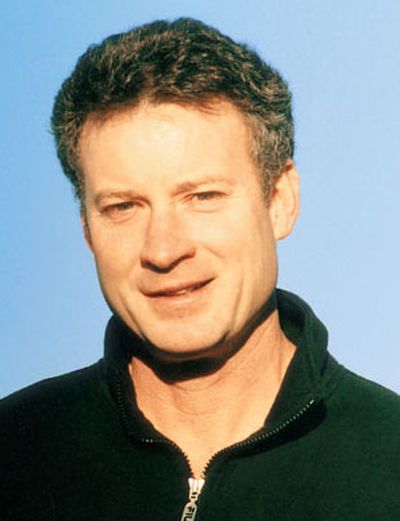Q-and-A: Timothy Egan

Timothy Egan, Spokane-bred winner of a Pulitzer Prize and a National Book Award, tackled the subject of the 1910 fires in his most recent bestseller, “The Big Burn: Teddy Roosevelt & The Fire That Saved America” (Houghton Mifflin Harcourt).
It’s a dramatic narrative of the fire, yet it’s also an insightful look at how the fires have shaped the West and, in some ways, the entire nation.
We caught up with Egan by phone from his Seattle home, where he writes the Outposts column for the New York Times. Here’s an edited version of our conversation:
Q: How big an event was this considered at the time?
A: It dominated the news. It was Hurricane Katrina and the Gulf oil spill. Something like a seventh of all of the military was sent here. It got page one coverage in New York, again and again.
Q: Was it the biggest fire in U.S. history?
A: There have been fires, such as the Peshtigo fire (in Wisconsin and Michigan in 1871), that have killed more people, been more lethal, but no one can pinpoint a wildfire in recorded American history that burnt this much, this quickly.
You have to get your hands around this: 3 million acres in a weekend. I say that it was like all of the state of Connecticut, burning in 36 hours. That’s amazing. Look at the Yellowstone fires (of 1988). They were big, but they weren’t nearly the size of this, or the ferocity.
Q: How did the 1910 fires shape the Inland Northwest today?
A: One is the actual physical change to the land. You’ve got third-growth timber, you’ve got scars there where it still hasn’t grown back.
The larger significance is that we had never in the United States tried to fight a fire on that scale. … From Eastern Washington to Glacier Park, the lasting legacy is not so much in the physical land, but in how you treat the land.
After these fires, they vowed to put out every fire. They had the 10 o’clock rule. If a fire started on your watch, they tried to put it out by 10 o’clock the next day. … That’s impossible. Fire is part of nature. It goes through and cleans out dead timber, etc. It is a regenerative force of nature.
And so actively trying to put out every fire left a lot of standing dead timber. So some of the big fires we had in the latter 20th century, including the Yellowstone fires of 1988 and some of the Idaho fires of the late 1990s, and fires still to come, are the result of having timber that probably should have burned every now and then during the seasonal fires. So I think that’s one legacy that’s still with us.
Q: What did the fires mean to the Forest Service and its continued existence?
A: At the time, the Forest Service was this fledgling agency. They were five years old – and they were about to kill it. Teddy Roosevelt had just left office and Congress was systematically defunding it. Your average forest ranger had 300,000 acres to cover. Just imagine the size of that. So it was entirely roadless, and largely without trails, and this fledgling agency was suddenly put to the task of fighting the biggest wildfire in American history.
And even though they themselves said they had failed – the fire clearly got the upper hand, it killed nearly 100 people, leveled five towns and burned 3 million acres – even though all this happened, it changed the public opinion of the Forest Service.
And so American sentiment, especially in the West, shifted from being largely skeptical – who are these green-shirted rangers, what’s their purpose, why are they being sent out here from Washington, D.C., we don’t need these people – to one of heroic stature. They were almost mythologized. These young men put themselves at risk to save this land.
So it changed public sentiment, and I argue that it saved the Forest Service. To this day, I think that agency owes its existence to this fire 100 years ago.
Q: Do you think we take for granted all of our public land (in national forests)?
A: Yeah, I think we do. I think you have to travel, to get out of the West, to see how amazing it is to have public land as your neighbor. Most countries don’t have this. They have private land, or leased land, or public land with tons of restrictions on it. We have, as part of our existence, public lands that everyone owns. We’re so used to it, you have to go somewhere where they don’t have any, to see what an extraordinary thing it is.
Q: Did you discover that the story of the 1910 fire still resonates with people?
A: That’s been one of the great surprises to me as an author. … This is a book about a still really obscure fire, in what many people think of as an obscure part of the United States, from 100 years ago. And it was on the bestseller list and sold more than 100,000 copies in hardback. So, to me, that’s really reassuring, that Americans care about their history enough that they would want to hear it.
The paperback edition of “The Big Burn: Teddy Roosevelt & The Fire That Saved America” comes out on Sept. 7.